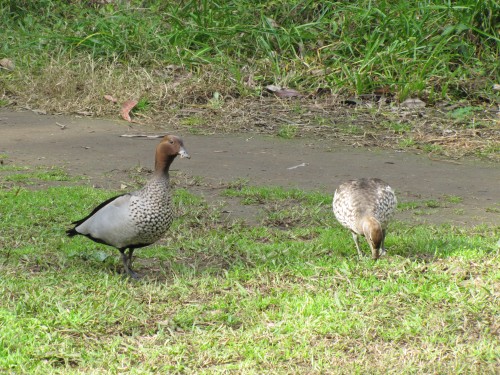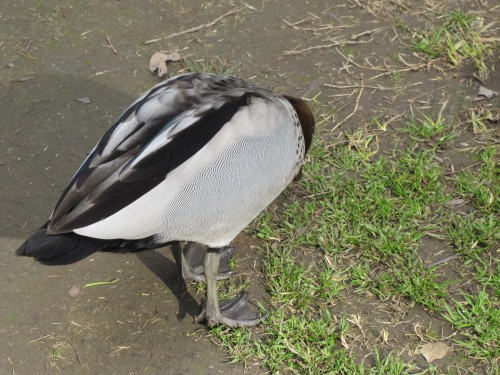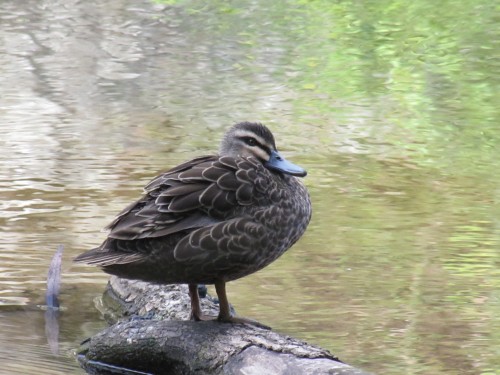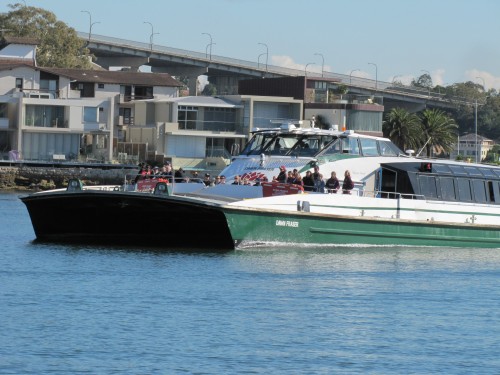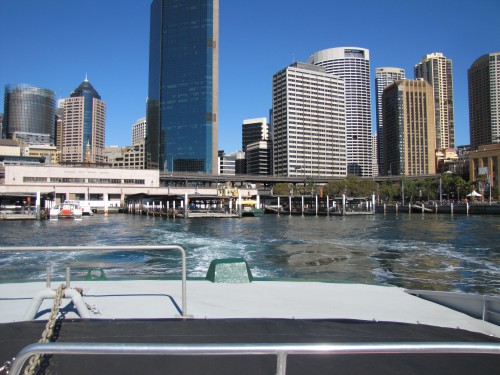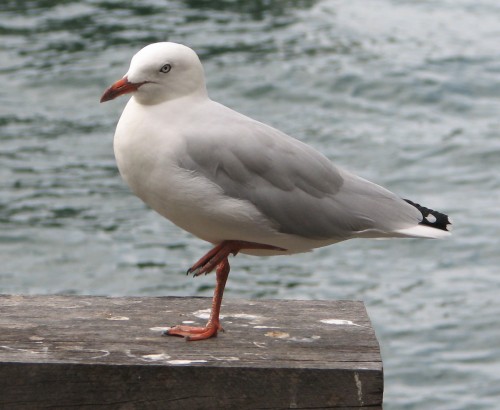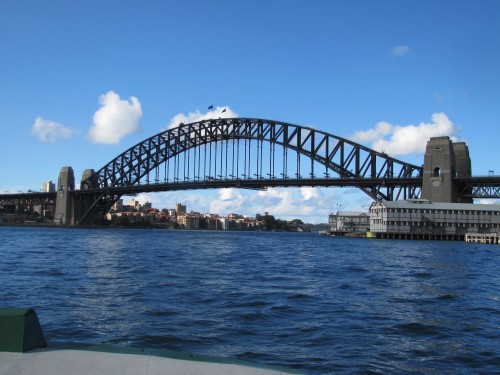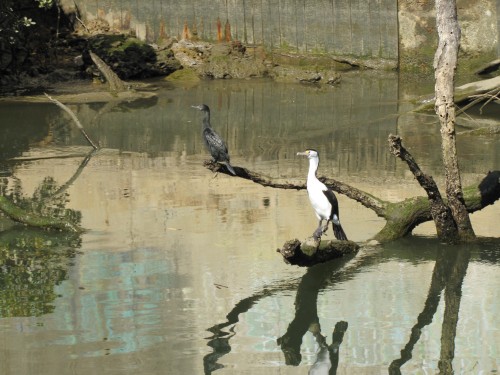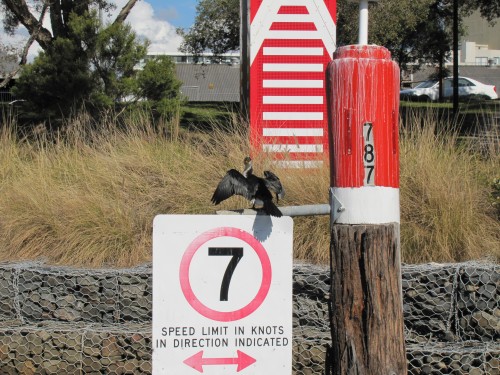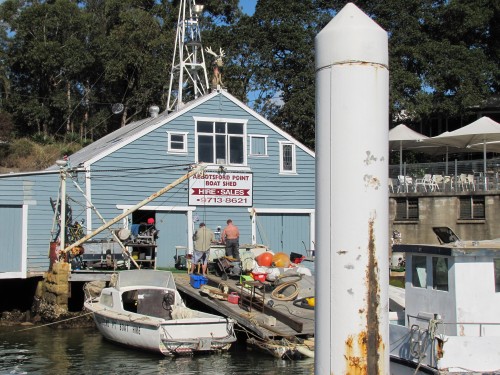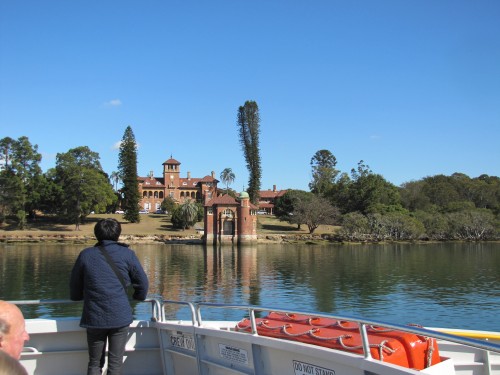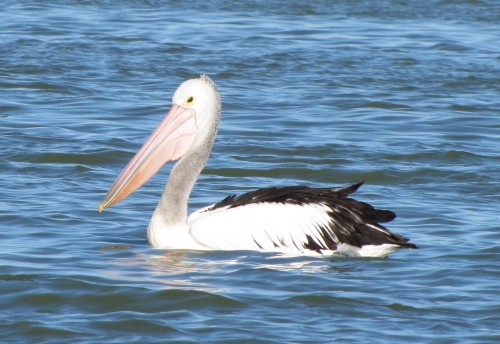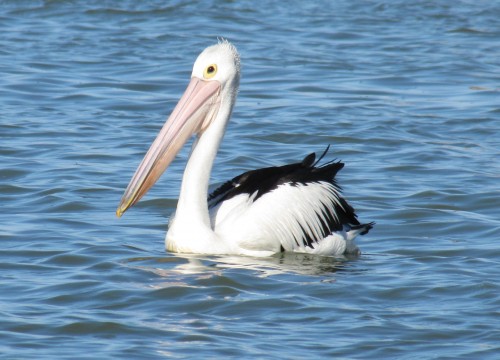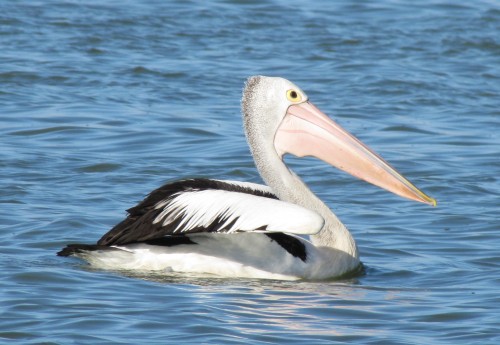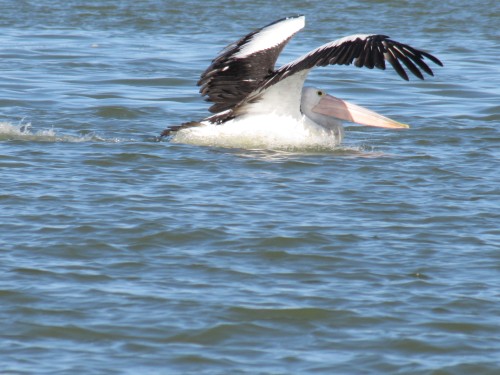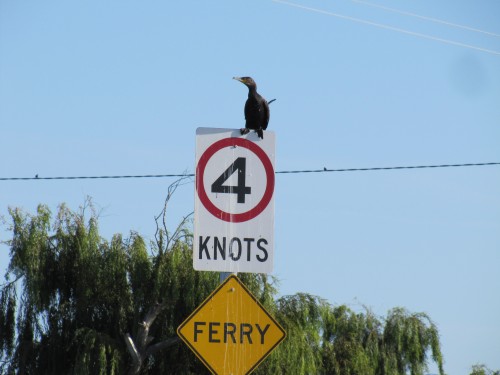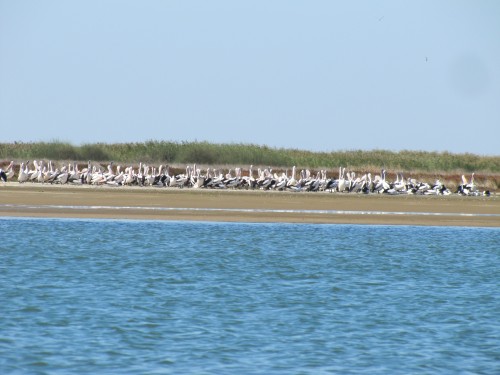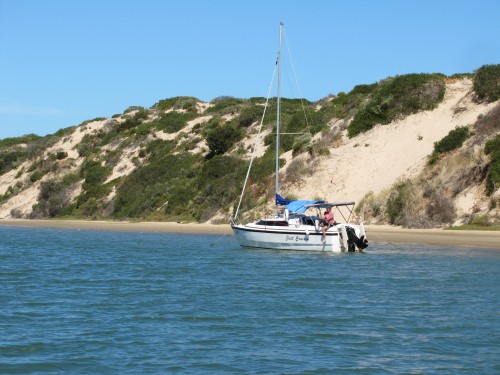Ducks in the Lane Cove National Park
The Lane Cove National Park in Sydney has the Lane Cove River flowing through it. Many areas near the banks of the river have been cleared of vegetation to accommodate ovals, picnic grounds and parking space for the many visitors who frequent the park daily. The water and the picnic areas naturally attract a range of ducks.
On our visit a few months ago I only recorded two species: Australian Wood Ducks and Pacific Black Ducks. The photo above shows the male on the left and the female on the right. The photo shows – in part – the big differences in the plumage between the male and female. The photo below shows some of the fine markings on the male bird.
Today’s last photo is of a Pacific Black Duck, one of our most common ducks.
Birds of the Parramatta River
While in Sydney earlier this year my wife and I took a day out from grandparent duties. One of the children was at school and the other at child care. We took the train into Circular Quay in the heart of Sydney Harbour. We had a short wait of about ten minutes for one of the ferries which operate up and down the Parramatta River, stopping at a dozen or more small jetties along the way and terminating near the heart of Parramatta CBD. We had done this trip some 35 years ago when our own children were little.
While I was more interested in watching and taking photos of the scenery along the way I also kept a watch out for any birds I could see. While I didn’t get a great list of species I really enjoyed the three hour return trip. To give me the best chance of getting good photos we stationed ourselves on the seats at the front of the ferry; sure- it was breezy at times but we had come prepared. The photo above shows another river ferry similar to the boat we were on. You will notice that it has the name “Dawn Frazer”. It was named after one of Australia’s most successful Olympic swimmers. On our cruise we passed the swimming pool where she trained. I believe that she still runs a hotel nearby.
As our ferry left Circular Quay (see photo above) the whole vista of Sydney’s CBD opened up for us. Leading up to this point I recorded Rock Doves everywhere, especially in the train stations and even in the underground stations. Around the ferry terminals were many Silver Gulls, Welcome Swallows and even a few Noisy Miners on the jetties, scrounging food dropped by passengers.
After only a few minutes in the ferry we passed under the iconic Sydney Harbour Bridge (see below). It is always great to get a different perspective of this wonderful structure. Usually we cross over it in trains and occasionally by car. Opened in 1932 this bridge still serves the city wonderfully, although it is now assisted by several additional bridges to the west and the Harbour Tunnel under the water.
The bridge is best viewed close up, usually from a boat, ferry or on foot via many access points around the harbour. One can – for a fee – join a Bridge Climb over the arch of the bridge. It’s only for the brave and not for those scared of heights, though to assure climbers they are secured tethered to the railing at all times. I haven’t done the climb and regret not doing it a few years ago when I was fitter and healthier. The view must be truly spectacular from up so high above the water.
After about an hour of cruising the harbour the ferry heads on up the Parramatta River, subject to favourable tidal conditions. As banks close in on the passage I had good views of the following birds:
- Australian Pelican
- Pied Cormorant
- Little Pied Cormorant
- Little Black Cormorant
- White Ibis
- Sacred Kingfisher
- Australian Raven
- Australian Magpie Lark
- Welcome Swallow
- Willie Wagtail
- Common Myna
- Grey Butcherbird
- Rainbow Lorikeet
- White-faced Heron
- Pacific Black Duck
- Variegated Fairy-wren
Finally, cruising on the river and on the harbour afforded me an excellent platform for observing the many wonderful and interesting buildings along the harbour. These include dirty industrial sites near Parramatta, magnificent apartment buildings, splendid old mansions – and an old and still very useful boat shed (see below).
Tourist hint:
If you are an Australian citizen with a Senior’s Card, Pension or Health Care card, ask for the special fare price when buying your ticket. Being over 60 years of age we both have Senior’s Cards. Instead of the normal fare of about $18 (Australian) each, our P.E.T. (Pensioner Excursion Ticket) cost us $2.50 each. This ticket enabled us to travel on any trains, buses, and ferries for the day.
And it was worth every cent.
Photographic study of pelicans
One of the advantages of travelling on the River Murray by boat is that occasionally the birds allow the viewers to approach quite close.
The photos of Australian Pelicans shown on today’s post were taken a few months ago at Narrung near the ferry crossing. This crossing is part of the River Murray system linking Lakes Alexandrina and Albert, not all that far from the mouth of the Murray.
Many of my photos – like those shown here today – are now available from my product store TrevorsPhotos including T shirts, caps, mugs, cards and many more items.
I can’t swim that fast
I took this photo at the very end of our boat trip earlier this year. We had travelled across Lake Alexandrina, along the River Murray past Goolwa to the Murray Mouth and through the Coorong.
As we approached the boat ramp next to the Narrung ferry (SE of Adelaide) this lone Little Black Cormorant was waiting for my camera while deciding whether he needed to fly away from our boat, or not. Looking at the mess on the signs, it is obvious that this is a common resting spot for many birds.
Look at all those pelicans
A few weeks ago I wrote about a trip I went on via boat through the Coorong south of Adelaide in South Australia. The Coorong is a natural lakes system near the mouth of the River Murray and is acknowledged as one of the major bird habitats in the world.
Just after leaving the river mouth our boat passed the sand bar shown in the photo above. I won’t even attempt to estimate how many Australian Pelicans were sitting there. All I can say is: there must a few fish in the lakes and river system, and this was just one of many large gatherings of this species we saw on the day.
